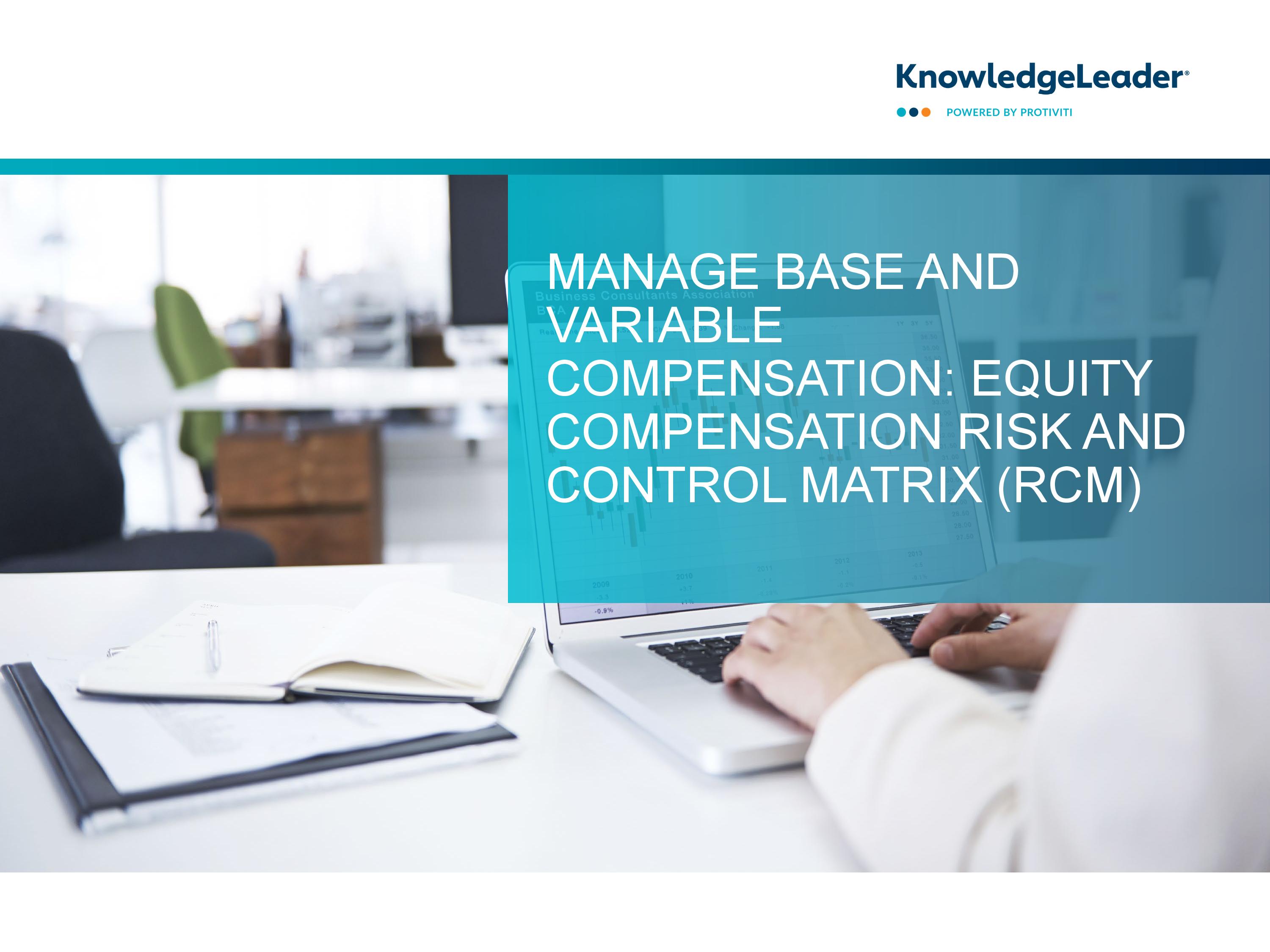Manage Base and Variable Compensation: Equity Compensation Risk and Control Matrix (RCM)

A successful risk management strategy requires a strong internal control environment. The risk control matrix (RCM) format emphasizes that strong and risk-oriented internal control environments are often optimized with automated/manual controls, depending on the situation.
An RCM provides an overview of different control objectives that organizations should take into consideration and the corresponding controls to safeguard the company against risks, which may arise if not checked timely. Once customized to an organization, this document can help the user in assessing each control. The control assessment can then also be summarized to develop an action plan.
This document outlines risks and controls common to the equity compensation aspect of the 3.5.1 Manage Base and Variable Compensation process in a risk control matrix (RCM) format.
Sample risks include:
- Data loaded into the stock compensation system may not be complete, accurate or input in a timely manner
- Calculations and processing performed within the stock compensation system may not be consistent with business requirements or assumptions
- Data received from the stock compensation system may not be complete or accurate
- Authorized users may be granted excessive rights
- Appropriate segregation of duties does not exist
This document can be used as a sample RCM and is not meant to be an exhaustive list of risks and controls. The KnowledgeLeader team will periodically update this RCM with new content. Organizations should select, update and modify the risks and controls included in this document to ensure that it reflects business operations.